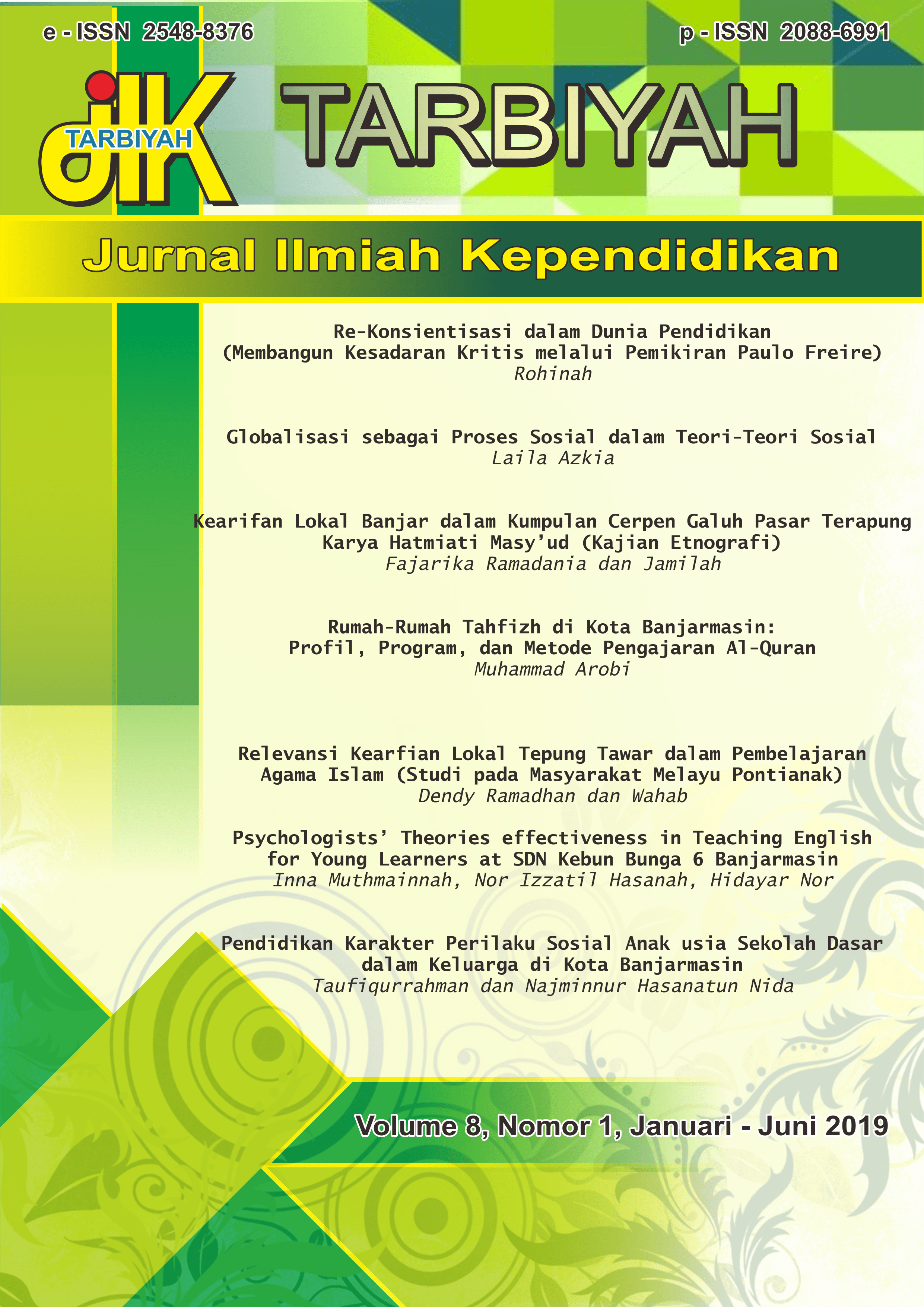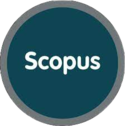The Effectiveneness Of Using Piaget, Vygotsky, And Brunner Theories In Teaching English For Young Learners At Sdn Kebun Bunga 6 Banjarmasin
DOI:
https://doi.org/10.18592/tarbiyah.v8i1.2667Abstract
To address three theories in teaching English for young learners (Piaget, Vygotsky, and Brunner), the researchers believe that an effective teaching teachniques that pay attention not only to the needs of the young learners but also to their interests are very important. This research reported our pre-experimental study on the effectiveness of using Piaget, Vygotsky, and Brunner theories in teaching English for young learners at SDN Kebun Bunga 6 Banjarmasin. There were 26 students of the fourth grade, study English at SDN Kebun Bunga 6 Banjarmasin, participated in this research. The data collected by conducting three times treatment in one class of the fourth grade, and written tests (pre-test and post-test). Findings revealed that the students got better score after the implementation of those three theories (Piaget, Vygotsky, and Brunner) in the classroom; they were very enthusiastic learned English in the classroom by interacting with the teachers and the peers. Their responses toward this activity were also positive. This research is expected to be beneficial for teachers who are interested in applying those three theories in English classroom, especially for young learners’ classroom.References
Ary, D., Jacobs, L.C., Razavieh, A., & Sorensen, C. 2006. Introduction to Research in Education. Belmont: Thomson – Wadsworth
Brown, H.D. 2001. Teaching by Principles: An Interactive Approach in Language Pedagogy. New York: Addison Wesley Langman
Cameron, Lyne (2001). Teaching Languages to Young Learners. United Kingdom: Cambridge University Press.
Daniels, Denise H., Shumow, Lee. 2002. Child development and classroom teaching: a review of the literature and implications for educating teachers. Department of Educational Psychology and Foundations, Northern Illinois University, DeKalb, IL, USA
Depertemen Pendidikan dan Kebudayaan. SK Menteri Pendidikan dan Kebudayaan No.060/U/1993. Tanggal 25 Februari 1993.
Diptoadi, Veronica Listyani dkk. ny. Becoming a creative teacher: a Manual for teaching English to Indonesian Elementary Students.Fakultas ilmu pengetahuan budaya, universitas Indonesia dan Lembaga bahasa Internasional.
Ekonomi, M.F Sri. (2007). Bahasa Inggris Untuk Anak Usia Dini. Jogjakarta: PT. LKIS Pelangi Aksara.
Gebhard, Jerry G. 1999. Language Teaching Awareness. USA: Cambridge University Press.
Harmer, Jeremy. (2001). The Practice of English Language Teaching. England: Pearson Education Limited.
Harmer, Jeremy. 2007. How to Teach English. United Kingdom: Pearson Education
Koshy, V. 2006. Action research for Improving Practice: A Practical Guide. London: Paul Chapman Publishing.
Latief, H.M.A. 2003. Penelitian Tindakan Kelas Pembelajar Bahasa Inggris (Classroom Action Research in English Teaching). Jurnal Ilmu Pendidikan, 10(2): 99-114.
Linse. Caroline T. (2005). Practical English Language Teaching: Young Learners. New York: McGraw-Hill.
Marks and Bowen, 1994. English Teaching Professional. New York, Macmillan
Masitoh, dkk. (2007). Strategi Pembelajaran TK. Jakarta: Universitas Terbuka
McNiff, J. 1992. Action Research: Principle and Practice. New York: Routledge.
Moon, J. 2000. Children Learning English. Hongkong: Macmillan Press.
O`Malley, M.J.&Pierce, V.L. 1996. Authentic Assessment for English Language Learners: Practical Approaches for Teachers. White Plains, New York: Addison-Wesley.
Puntambekar, Sadhana., Hubscher, Roland. 2005. Tools for Scaffolding Students in a Complex Learning Environment: What Have We Gained and What Have We Missed?. EDUCATIONAL PSYCHOLOGIST, 40(1), 1–12. Lawrence Erlbaum Associates, Inc.
Schindler, Andrea 2006 Channeling Children’s Energy through Vocabulary Activities,English Teaching Forum. No. 2.
Scott, Wendy A. and Lisbeth H. Ytreberg. (1990). Teaching English to Children. London: Longman.
Shabani, Karim., Khatib, Mohamad, Ebadi, Saman. 2010. Vygotsky's Zone of Proximal Development: Instructional Implications and Teachers' Professional Development. English Language Teaching Vol. 3, No. 4. Published by Canadian Center of Science and Education
Shin, Joan Kang. (2006). Ten Helpful Ideas For Teaching English to Young Learners. English Teaching Forum. No. 2.
Downloads
Published
How to Cite
Issue
Section
License
Authors retain copyright and grant the journal right of first publication with the work simultaneously licensed under a Creative Commons Attribution 4.0 International License that allows others to share the work with an acknowledgment of the work's authorship and initial publication in this journal.




